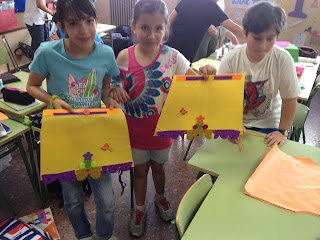Hahaha.... supongo que todavía os quedará cercana esa frase, ¿no es así?
Pues bien, tras unos días de descanso total, hoy ya es 1 de Julio y por eso Carmen y yo os queremos invitar a realizar algunas actividades (pocas, que estamos en verano:).
Aquí os dejamos unos links a algunos cuadernillos de mate y lengua muy interesantes.
CUADERNILLO VERANO (MATE, LENGUA E INGLÉS)
COMPRENSIÓN LECTORA
PROBLEMILLAS MATEMÁTICOS
MATEMÁTICAS
Be careful! Si os encontrais divisiones con decimales, no las resolváis, son objetivo de sexto de primaria.
Respecto a inglés os iré subiendo stories de esas que nos gustan tanto a la pestaña de "videos" :)
Aquí os dejo el primero:
STORY TIME: THE LUCKY ENVELOPE
In the UK, it's time for the long summer break for children, and many of us will be going on holiday.
In this story, Dalia's family chooses a holiday, and in this story, Sam and Pam go on a camping adventure. Each story comes with a worksheet to print and complete.
Pincha aquí
Recordad todas las preguntas que hacíamos en "Questions & Answers":
- How are you?
- How old are you?
- How do you feel?
- Where are you from?
- What are you wearing?
- What's your favourite...?
- Who is your favourite...?
- Can you...?
- Could you... when you were five?
- What time is it?
- What do you usually do?
- I'm ________, what should I do?
....
Durante esta semana os propongo esta pregunta, podéis ir contestando con vuestros comentarios:
WHAT DO YOU USUALLY DO ON HOLIDAYS?
Espero que estéis disfrutando del summertime, ¡nosotras os echamos mucho de menos!
Miss U
xxx
























































